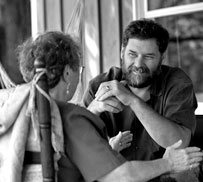![]()
Search
Recent Posts
- ChangingAging.org Redesign -- Please Bookmark!
- Disaster in Buffalo
- Power Up Friday
- Blanchard WinsDays
- Kevin Frick writes...
- Monkhouse Monday
- Getting Closer!
- Blanchard WinsDays
- Power Up Friday
- My Pick for Health and Human Services
- Understanding Health Care Reform
- Facts Are Stubborn Things: Social Security Edition
- Monkhouse Monday
- Localism is Coming
- Krugman Can't Wait...
Recent Comments
- nicobridge on
Power Up Friday - Joe Podson on
Power Up Friday - Christa Monkhouse on
Power Up Friday
Category Archives
- AGING 100
- Aging
- Culture
- Dementia
- Eden Alternative
- Erickson School
- Green House
- Health Policy
- Longevity
- Media
- Rockets
Monthly Archives
- February 2009
- January 2009
- December 2008
- November 2008
- October 2008
- September 2008
- August 2008
- July 2008
- June 2008
- May 2008
- April 2008
- March 2008
- February 2008
- January 2008
- December 2007
- November 2007
- October 2007
- September 2007
- August 2007
 Subscribe to this blog's feed
Subscribe to this blog's feed
Announcements

Blog Data
« Non Witch Stories | Main | Aging 100 Students Click Below »
October 31, 2008 |Permalink |Comments (3)
Power Up Friday
As promised, I’m back to report on John Barth’s newest book, The Development. The 78-year old author has turned his attention to a slice of America, by constructing and deconstructing life in an upscale gated community in the Maryland coastal region.
Barth is known as a writer of humor, but his books cover the gamut from comedy to tragedy, albeit with a certain sense of playfulness in the use of language, autobiographical insertions, stories within stories, and a conscious manner of toying with the reader. His little-known book, The Last Voyage of Somebody the Sailor is one of my all-time favorite novels.
The Development is a collection of short stories with several common characters and the events that tie them together. Life in the development is full of mundane activities, planned social engagements, and people grappling with life issues large and small. The overall tone is remarkably restrained and one might conclude it’s rather lightweight in sections. But looks can be deceiving.
The overall feeling I get from the book is one of happy, smiling people leading lives of quiet desperation. There is great love within couples and families, but when those lives are disrupted by loss, the greater community provides little true support or solace. They are more concerned with whom is let in or let out of their world. It is clear that “aging in gated-community” is not the same as “aging in community”.
As one who works on transforming nursing homes, it fascinates me how many of the institutional features -- superficial relationships, programmed generic activities and lack of true reciprocity -- have been incorporated into our community living areas as well. It is not just nursing homes that need to be reformed. The frailty of this social structure is laid bare, meteorologically and metaphorically, by the destructive storm that strikes toward the end of the book.
This book is an important commentary on how we age in America. Like most of Barth’s works, it is funny, sad and challenging.
PS – Don’t forget to vote next week. Democracy is very much a “use it or lose it” deal.
Comments ( 3)
My friend Emi Kiyota, who does great work with me on "value-based-design" (exactly what Al is talking about when values in design are missing) and I were once joking about "gated communities", wondering if "gate" is short for "ghetto", wondering if they shared some kind of a phonetic kinship. Of course this is not true, ghetto coming from the Italian "borghetto" (in English probably "borough"), referring to the quarter in Venice when Jewish people were "gated in" from outside. Ghetto since then stands for one homgogenous group of people separated from the rest of the world. And it is the gate which controls it. In gated communities the "gate-control" comes from inside, it's effect seems to be the same.
This article hit home with me a bit.
I oversee (ha) 3 buildings with 277 low to very low income subisidized senior housing apartments. The course is geared toward long term care communities but I enjoy trying to translate what I am hearing and learning into my world.
This article is so true. Some residents have been active all there lives and continue that way. For some this is a new adventure and some this is heaven's waiting room (sad) and for some they have lived either by choice or just plain conditioning isolated. Living in apartments in the city; taking the elevator to their apartment and locking the door when they were 40 and they continue this.
We have hired a service coordinator and organized floor captains,assigned welcome buddies, etc. to welcome new residents. We started a new residents meeting that I faciltate and even after a personal invitation, 25% do not attend. The group is lively and engaging but another 40% do not continue engaging in activites. It is a slow and never achieved process.
We want to offer more than just as HUD says that we deliver, "bricks and mortar". This elder depression for most is avoidable with the right team and focus. This I believe.
I hope that Joe is right. It is not easy to reform nursing homes and senior housing, much less communities where elders live.
Yesterday I visited the Philadelphia Museum of art with two friend - to celebrate one of my friend's 50th birthday. One of the exhibits we went to was photographs and quilts from a small town in Alabama. It was frankly amazing! The women (mostly elders) seemed to say through their quilts (whether created for utilitarian or aesthetic reasons) and through their photos that they were happy and content. Their ability to express themselves - either as sole creators or as a member of a "sewing club" - might have been one thread to their apparent happiness.
Lynette














